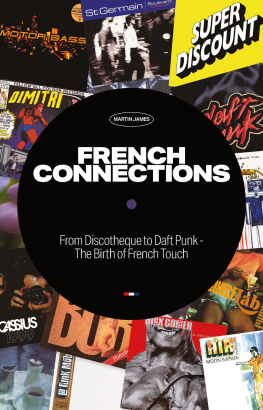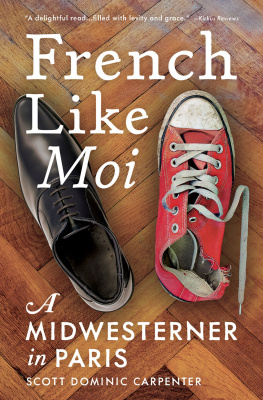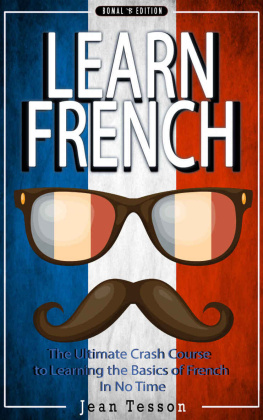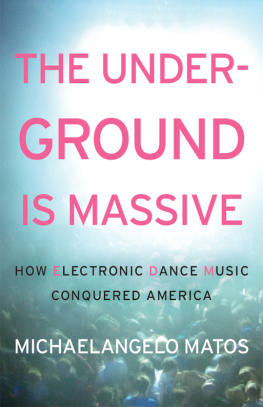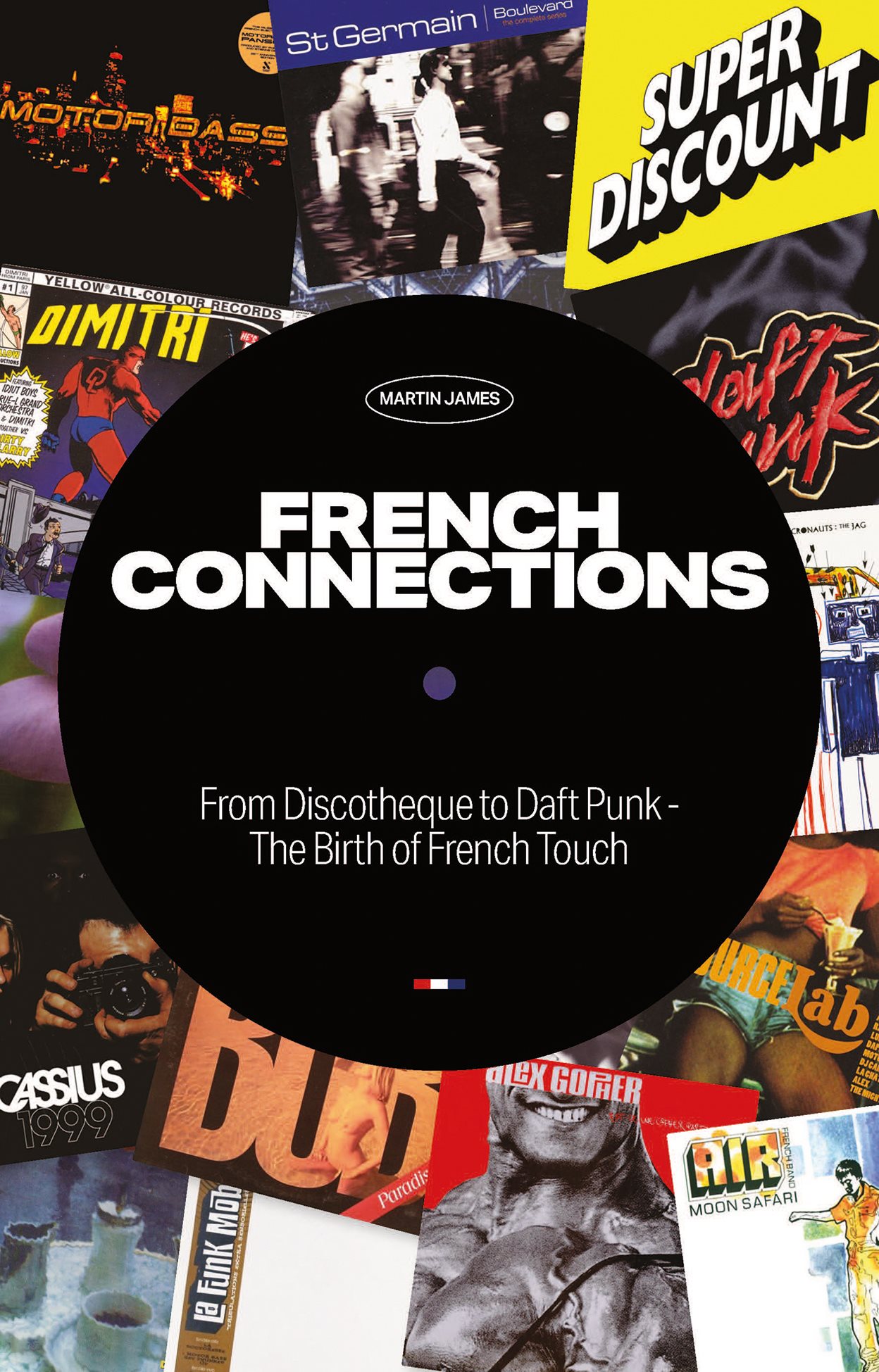ABOUT THE AUTHOR
Martin James is an internationally published music critic who has contributed to some of the UKs leading music magazines. He was part of the editorial team that produced the legendary dance music magazine Muzik and has written for DJ , Mixmag , Electronic Sound and Urb . He also regularly contributed articles about jungle, drum & bass, UK hip hop, dub reggae and electronic music to the Guardian and the Independent .
Martin has written several books about urban and electronic music and culture and is also the author of the definitive biography of The Prodigy. Now in its third edition, We Eat Rhythm covers the bands early years and was written in close collaboration with The Prodigy. The second part of the biography We Live for the Beats will be published in 2024.
Martin is Professor of Creative and Cultural Industries at Solent University, Southampton, where he lectures on underground music and the music industry.
First published in the UK by Sanctuary in 2003
This edition published by Velocity Press 2022
velocitypress.uk
Copyright Martin James 2003, 2022
Printed and bound in Great Britain by Clays Ltd, Elcograf S.p.A.
Cover design
Hayden Russell
Typesetting
Paul Baillie-Lane
pblpublishing.co.uk
Photography
Mark Stringer
Martin James has asserted his right under the Copyright, Designs and Patents Act 1988 to be identified as the author of this work
All rights reserved. No part of this publication may be reproduced, in any form or by any means, without permission from the publisher.
ISBN: 9781913231163
also by martin james
State of Bass: The Origins of Jungle/Drum & Bass
We Eat Rhythm: The Prodigy Story Part 1
Dave Grohl: All of Him
Moby: Replay His Life and Times
Funk Soul Brother: Fatboy Slim
Media Narratives in Popular Music (with Chris Anderton)
Understanding the Music Industries
(with Chris Anderton and Andrew Dubber)
fr e n c h
c o n ne ct i o n s
From Discotheque to Daft Punk
The Birth of French Touch
Martin James
To Lisa, Ruby Blue, Felix Drum and Bella Pearl always.
Also dedicated to my generous brother in beats, Philippe Zdar (19672019). RIP, my friend.
ACKNOWLEDGEMENTS
Why a book about French dance music? Well, it all started by accident, really. I was in Paris early in 1994 interviewing Chris the French Kiss of Yellow Records fame, when a chance discovery of the BPM record shop in Bastille opened my eyes to a new development in French dance music. Sure, Id long been aware of the rave scene in France (I even went to and wrote about a few free parties and club events in the early 90s). I was already a fan of Laurent Garnier and Eric Morands FNAC and F Communications, but this was something new. A sound that seemed to draw on the influences of hip hop as much as dance culture. I didnt know it then, but I was witnessing the beginnings of what was to become French Touch.
In the five years that followed this first trip, my visits to Paris became so regular that Eurostar thought of naming a train after me! I was the first UK journalist to interview many people who would become seen as the leading players. I wasnt the only journalist writing about these artists, but only Mixmag Updates Frank Tope could claim to have covered the scene to quite the same level. A fact that led to an accusation in the French media that I was partially responsible for the hype that quickly surrounded these artists. A hype that everyone claimed to hate but used to the fullest advantage. My involvement extended to popularising the term French Touch, although I also stand accused by French media, among others, as being responsible for coining the term. It would be more accurate to say I borrowed it from French cinema and applied it to the music in print. French academics have gone to extraordinary lengths to prove I didnt coin the term in the years since. So I reiterate, I popularised the term French Touch and in so doing liberated it from the close quarters of Paris club culture.
So, through my visits, I discovered a city without a club culture but a country with a well-organised free party scene. I found a scene that was largely run by a rich elite from the posh suburbs of Paris and an underground movement that vibrated the foundations of the urban projects. I discovered a country with a long history in both dance and experimental music, but a mainstream stuck in the pop songs of the 80s. I also experienced the dichotomy of a pro-Techno Parade government at complete odds with a public (and police) that considered dance music to be all about drugs. But above all, I found a love of dance music that reminded me of the golden age of party culture in the UK.
For so long ignored by the rest of the world, France had been able to develop at its own pace. It is often claimed that their relevance was less valid just because they were a few years behind the UK and Germany. But it is this slow start in the face of a hugely oppositional public that turned France into a hotbed of talent.
French Connections: Daft Punk, Air, Super Discount and the birth of French Touch offers an insight into the events, artists, DJs and producers that helped create the contemporary dance music climate in France. There are some omissions, though. Firstly, if everyone who had even been involved in dance music in France got a mention, this book would just read like a telephone book. So I have had to act as a gatekeeper, reserving judgement on who the most important figures were.
Furthermore, I omitted people I considered to have had little bearing on the actual dance culture. For example, Jean Michel Jarre may be world-famous as a synth virtuoso, but my consideration was that his work had little influence on French dance culture. His music was firmly rooted in the rock aesthetic. Although it can be argued that he made synthesisers more popular among young musicians, his input into the sampling and ecstasy culture of the house and techno generation is debatable.
Similarly, Deep Forest; although they enjoyed huge global success with their world music/ambient crossover, their influence on the development of dance culture in France was tiny. They did, however, do a huge amount to promote the world music/dance fusion sound that had some impact on France. However, this musical development is worthy of a book unto itself and, I feel, not so important in the story I have focussed on.
When I started this project, I was determined that the French Touch sound that became popular at the end of the 90s would not be the books main focus. However, as I interviewed people, I found it was impossible to avoid it. Everyone uses this development as a reference point. It either denotes the artists sense of belonging or underlines their sense of otherness. It was therefore impossible to avoid.
A quick note about the structure of the book. It doesnt follow linear narratives. Histories dont follow straight lines but events overlap. To understand the present, it is often necessary to overlay the past. So this book might jump from disco back to musique concrete , it might skip between decades, but its through this that I attempt to make sense of the messy lines of historical retelling.

